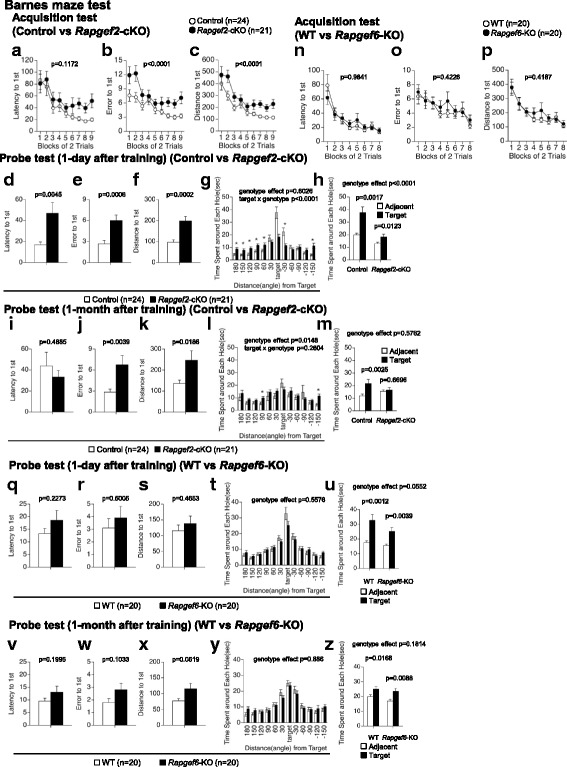Fig. 6.

Spatial learning and memory. a-m Effects of Rapgef2 deficiency. Data obtained with acquisition tests, where latency (a), number of errors made (b) and distance traveled (c) before acquisition of a target were determined in each block of 2 trials, are shown. Data obtained with probe test performed 1 day after training, where latency (d), number of errors made (e), and distance traveled (f) before acquisition of the target were determined, time spent around each hole whose locations are indicated as “Distance from Target” in angle were determined (g), and time spent around the target and its adjacent holes was calculated (h), are shown. Data obtained with probe test performed 1 month after training, where latency (i), number of errors made (j), and distance traveled (k) before acquisition of the target were determined, time spent around each hole whose locations are indicated as “Distance from Target” in angle were determined (l), and time spent around the target and its adjacent holes was calculated (m), are shown. n-z Effects of Rapgef6 deficiency. Data obtained with acquisition test (n-p), probe test 1 day after training (q-u), and probe test 1 month after training (v-z), all of which were performed with methods equivalent to those for examining effects of Rapgef2 deficiency, are shown. *, p < 0.05
